Life @ HU
Sports
Haridwar University, Roorkee boasts of superior infrastructure for sports and actively creates opportunities for students to take active part in sports competitions. In this endeavour, we conduct the Zonal Sports Fest named “The Sports Carnival” in the month of November every year. Students from various institutions actively participate in multiple events like: Chess, Table Tennis, Basket Ball, Volley Ball, Cricket etc.

In line with the objective of all round development of students, the College takes interest in providing ample opportunities and facilities for indoor sports, which are provided in all hostels separately. So that The college provides the students with a cemented basketball court, lawn tennis court, volleyball court, shuttle badminton court, football court, cricket court, and athletic field and gymnasium facilities. The college also provides indoor facilities for Billiards, table tennis, caroms, and chess. We feel happy and fulfilled that our students make the best use of the facilities provided. The Sports Trainer facility is also available in the campus


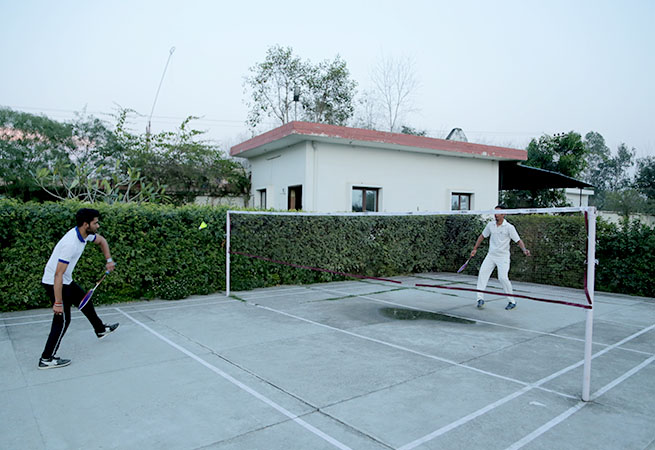
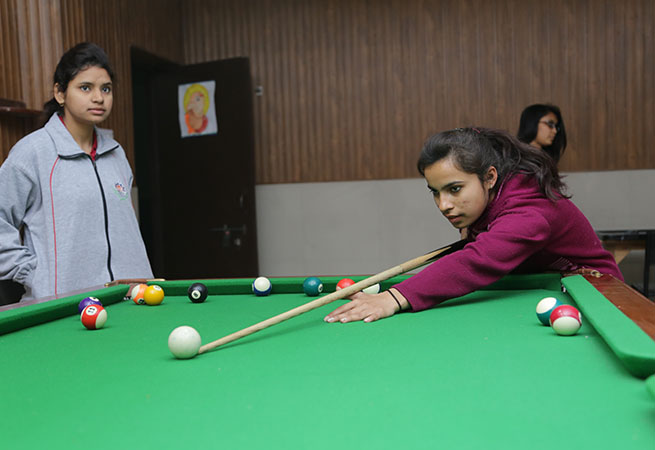
Traditional Indian Games
Sports is a great connector – across countries, ages, religions and even across socio economic statuses too. No wonder sports bridge all gaps pulling people and connecting them emotionally. Playing traditional games as a family brings the family closer, and the bond stronger. Children need unstructured playtime and introducing conventional games to the family routine can be a great bonding activity for all. Children who have strong family relationships fare well at all other aspects of life as well.
Traditional Indian games are extension of Yoga in a practical form. There are 8 sections in Yoga. Out of this 3 focus on physical well-being, refining the senses, strengthening the body and balancing your breathing. All Indian games generally encourage one or more of these three.
Unstructured play has a vital role in developing various aspects of children’s growth, behaviour and interpersonal skills therefore, the need to re-establish traditional play in children’s lives.
Indian Traditional Indoor Games:
1. Chaupar/Pachisi
Pachisi, a board game, was quite popular in ancient India. The game finds its mention in the Mahabharata. Akbar and his descendants also played this game. It involves two to four players who strategise their pawn’s moves on a piece of cloth designed in the shape of a symmetrical cross to win the game.
Chaupar is also a board game which was invented around the 4th century. It includes two to four players who use cowry shells and wooden pawns to plan their manoeuvres and win the game. The contemporary version of Pachisi/Chaupar is Ludo which you might have played in your childhood.

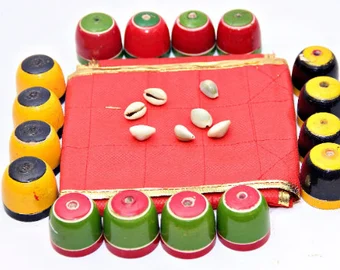
2.Pallankuzhi
It is one of the famous games which was played in ancient South India. Pallankuzhi is believed to have originated in Tamil Nadu and later spread to other places like Andhra Pradesh, Karnataka, Kerala, and even Malaysia and Sri Lanka. Variations of the game are called Kuzhipara in Malayalam, Ali Guli Mane in Kannada and Vamana Guntalu in Telugu. The game includes a rectangular board, divided into two horizontal rows and seven vertical columns. Thus, there are 14 cups on the board and 146 counters. Usually, cowry shells or tamarind seeds function as counters. Two people can play this game at a time. .


3. Gutte/Five Stones
Gutte is a fun game can be played by both adults and kids. It generally requires five pebbles or small stones. There is no limit on the number of players who can play this game at a given time. The player needs to spin a stone up in the air and gather the remaining stones lying on the floor with one hand without allowing the one in the air to fall to the ground. Next, the player has to throw two stones up in the air and collect the rest and so on. The player who finishes eight steps in the minimum number of tries is the winner.


4.Lattoo
Spinning top or Lattoo is a popular game in Indian villages even today. This simple game has been in existence since 3500 BC. At the beginning, tops were made of clay. Later, wooden tops began to be used. Today, coloured and designer tops are also available. There is a string which helps to spin the top and also to lift up the spinning Lattoo. Two or more players can play this game. All the players wrap their tops with the string and then unwind it by pulling the string, making the top rotate on the ground. The players need to pick the top with the string as fast as they can. The player whose top spins the longest is declared the winner.
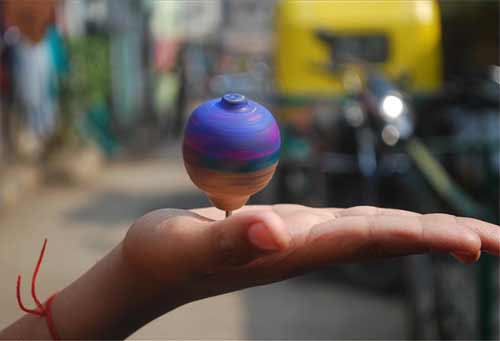

5.Antakshari
Antakshari is an entertaining Indian desi game is often played by grown-ups and children alike. It originated in Indian and is now played worldwide with alterations. Variations can be made to the original idea to suit the occasion such as family gathering, weddings, parties, etc. To play this game, two teams are made. One team sings a song, typically a Bollywood song. The other team has to sing a song beginning with the last consonant of the song sung by the first team. Both the teams keep taking turns until one can’t think of a song and thus loses.

Indian Traditional Outdoor Games:
1. Kancha
One of the exciting childhood games played in India was Kancha. Other names of the game include Golli, Marbles, Goti, and Lakhoti. It began during the Harappan age. The game involves the use of round glass marbles or kanchas. Several people can participate in this game. The objective is to collect the maximum number of marbles by striking the chosen kancha with another one. The winner gets to take home all the marbles of the other players.

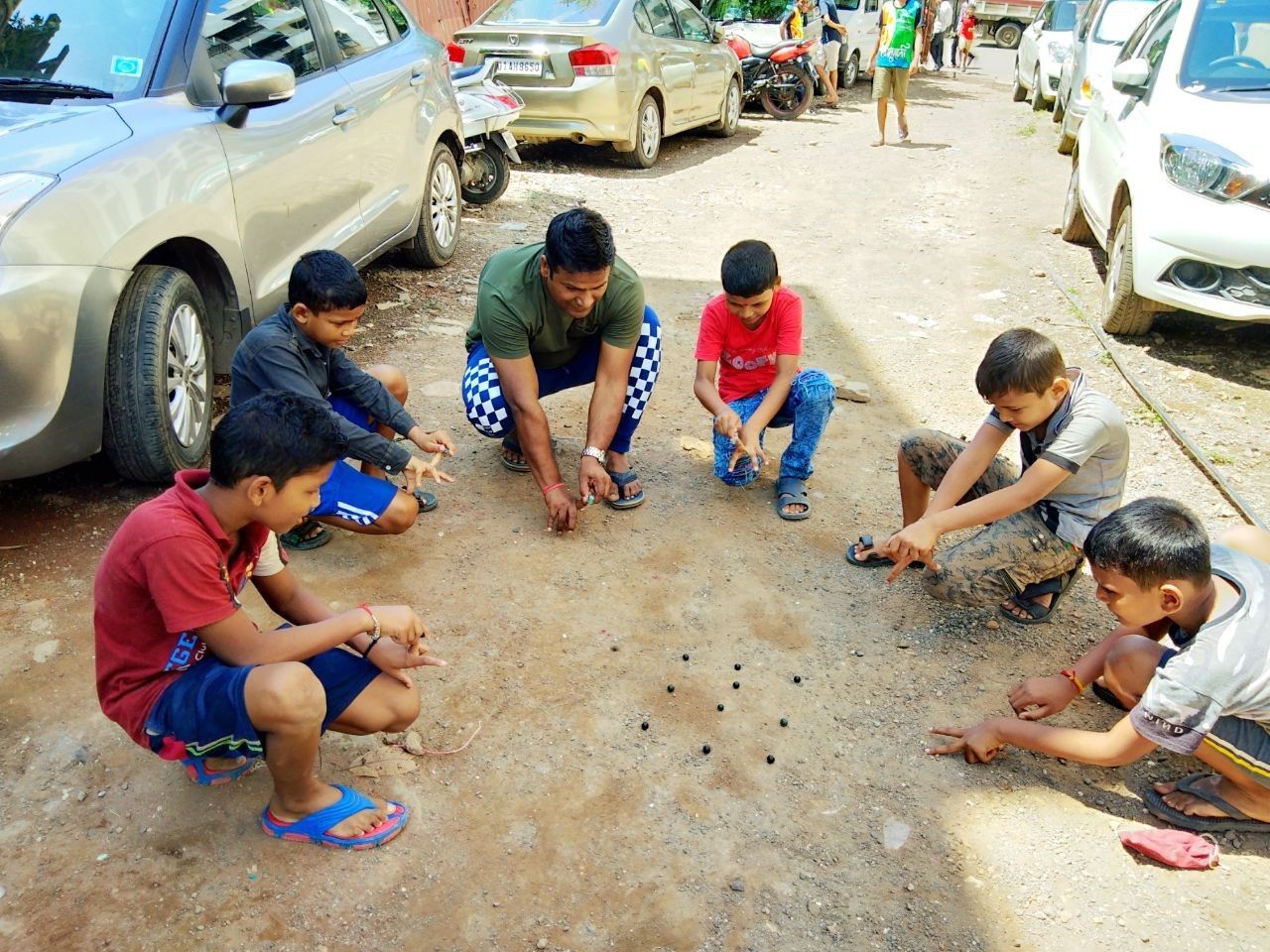
2.Nondi/Hopscotch
This hopping game, also called Stapoo, is a popular outdoor game. In Tamil Nadu, it goes by the name Nondi. The game involves drawing a grid on the ground and numbering it. Players take turns and throw an object, usually a small stone, onto the numbered blocks. They have to hop across the blocks to pick up the object jumping on one/two legs to finish the lap, taking care not to step on the border lines. It is a group game.


3. Gilli Danda/Lippa
Gilli Danda is an older version of modern-day baseball and cricket. Its fame once matched that of cricket in India. All it requires is two unevenly sized sticks. The smaller stick is called the Gilli and the longer one which is used to strike the Gilli is called the Danda. The objective is to flip the Gilli into the air with the Danda. While the Gilli is in the air, the player must hit it with the Danda as far as possible. The player also needs to run to touch a pre-decided point before the opponent can lay his hands on the Gilli. It can be played by many people at the same time.

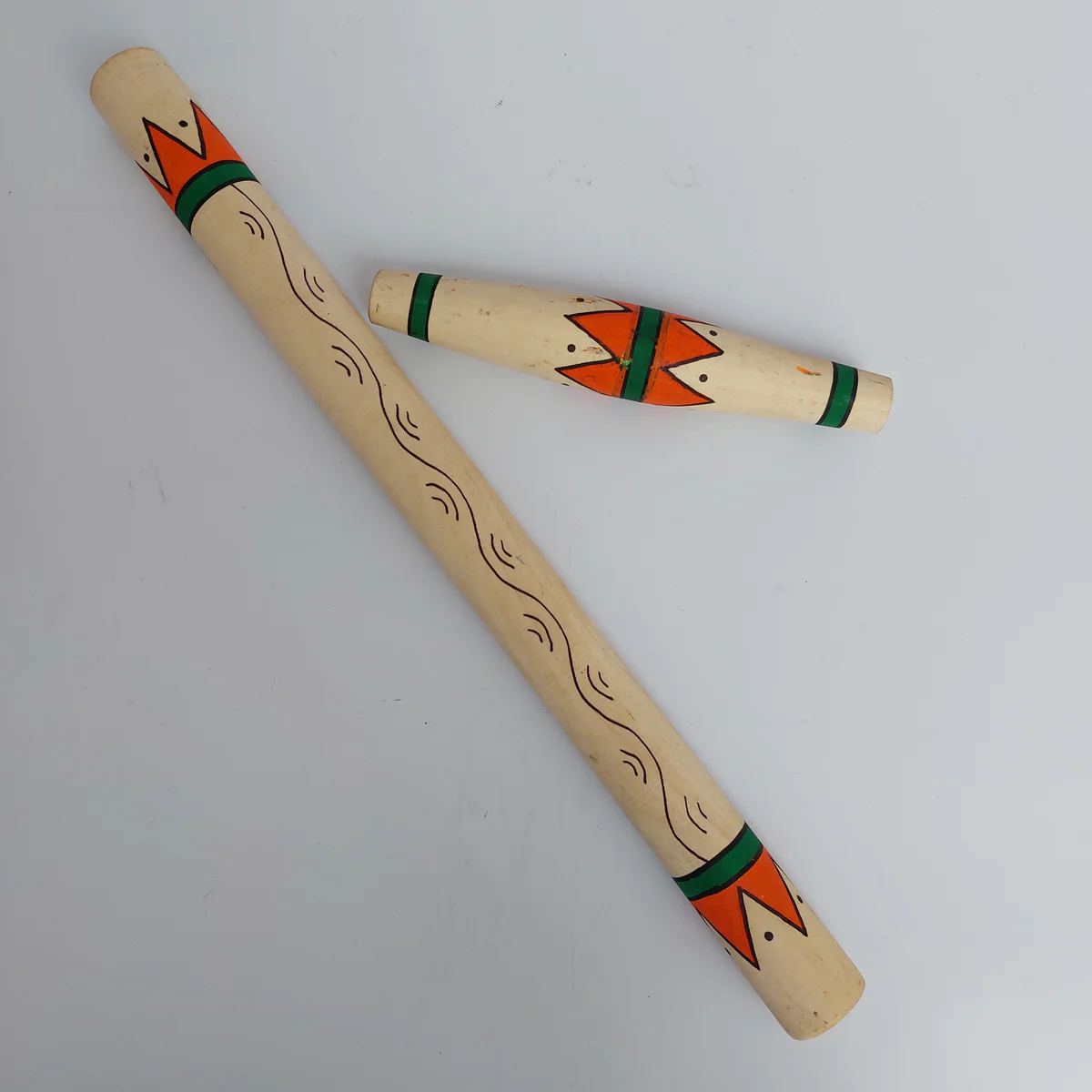
4. Kabbadi
Kabbadi is a team sport which requires no equipment, only agility and strength. It originated in India and is now played globally. Kabbadi in Hindi means holding the breath. Players form two teams with 7 to 12 members each. Players of one team have to break-in the opposing team’s area. While doing so, they need to try and touch as many opposing players as they can. The ‘touched’ players are declared out. The team with the least number of players at the end of the game is declared the winner.

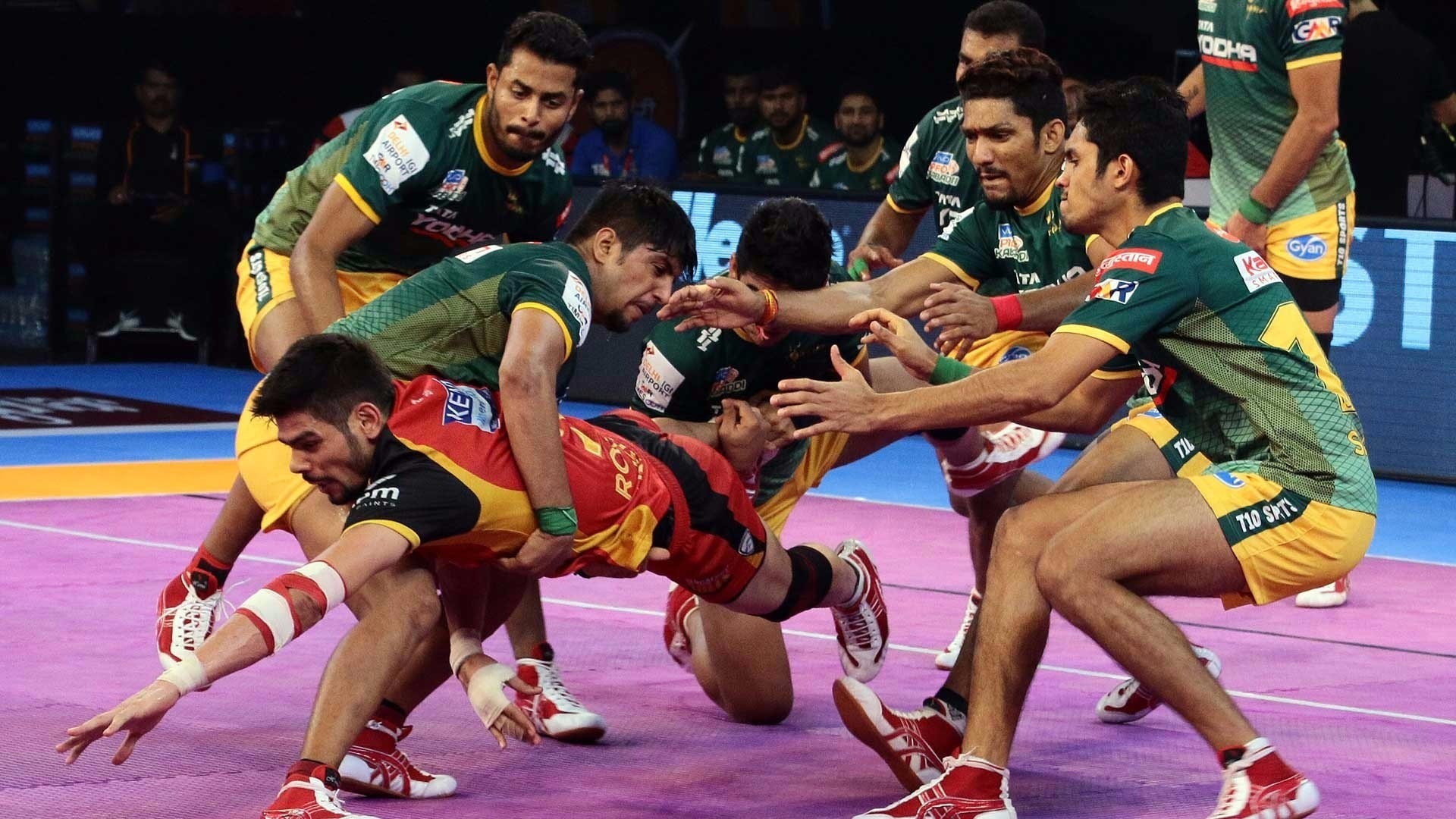
5. Satoliya/Pithoo/Lagori
Satoliya/Pithoo/Lagori is basically seven stones. It originated in India and has found its way to other places. It involves a ball and a pile of stones, usually seven. There are two teams of players. One player of the attacking team needs to strike the pile of stone with the ball to knock them over in three shots. Then the whole team has to try and restore the pile before being hit by the ball and declared ‘out’.
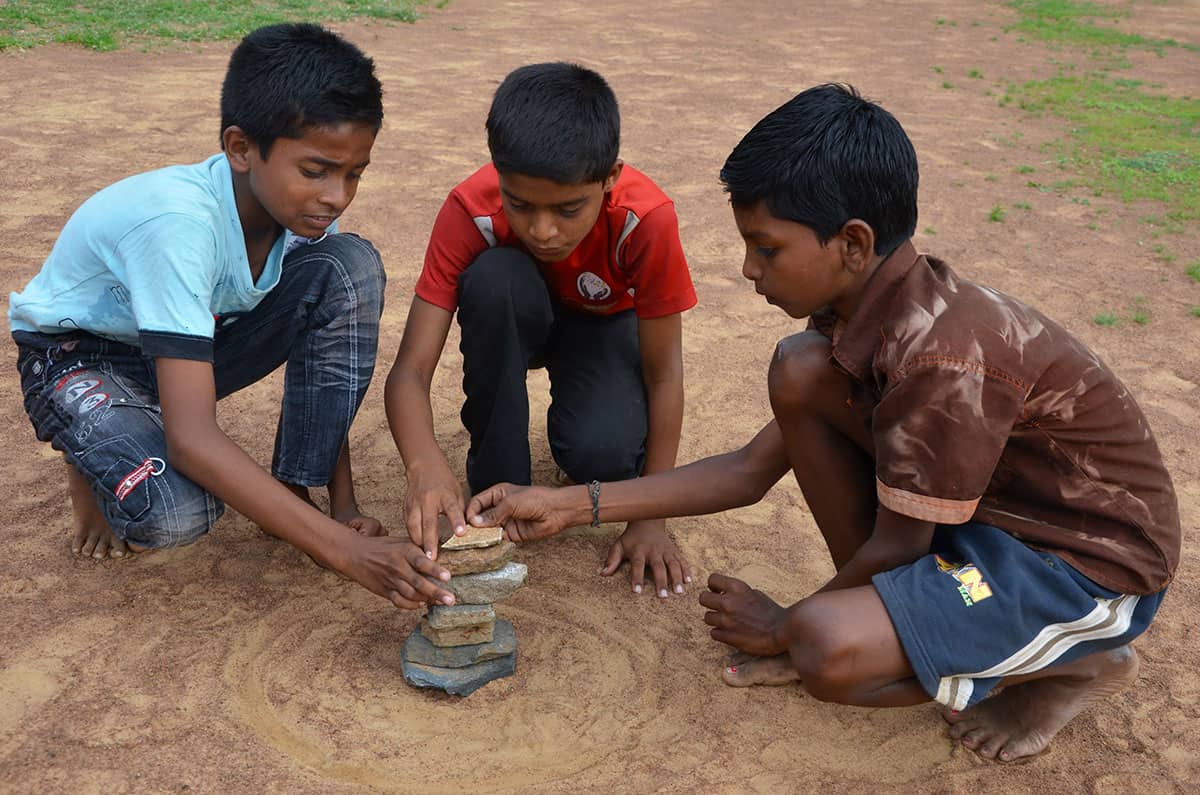
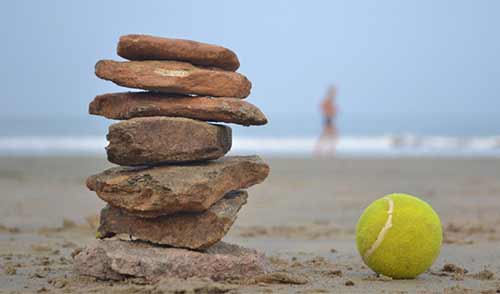
6. Chain
Chain is another delightful children’s game. This game is more fun to play when there are more players. The ‘denner’ has to catch the other members. When the denner catches someone, he joins hands with the denner to form a chain. Together they try to catch the other remaining members. Thus, the caught members keep joining to form a chain till all the players have been caught.


7. Kho Kho
Kho Kho is a team game which started in India. It gained popularity in 1935 when its rules were brought out by the Akhil Maharashtra Shareerika Shikshan Mandal. It comprises of two teams with nine participants each. Members of the chasing team sit on the ground in a straight row with alternative players positioned in opposite directions. The chasers have to catch the opposing team members before the stipulated time is over.
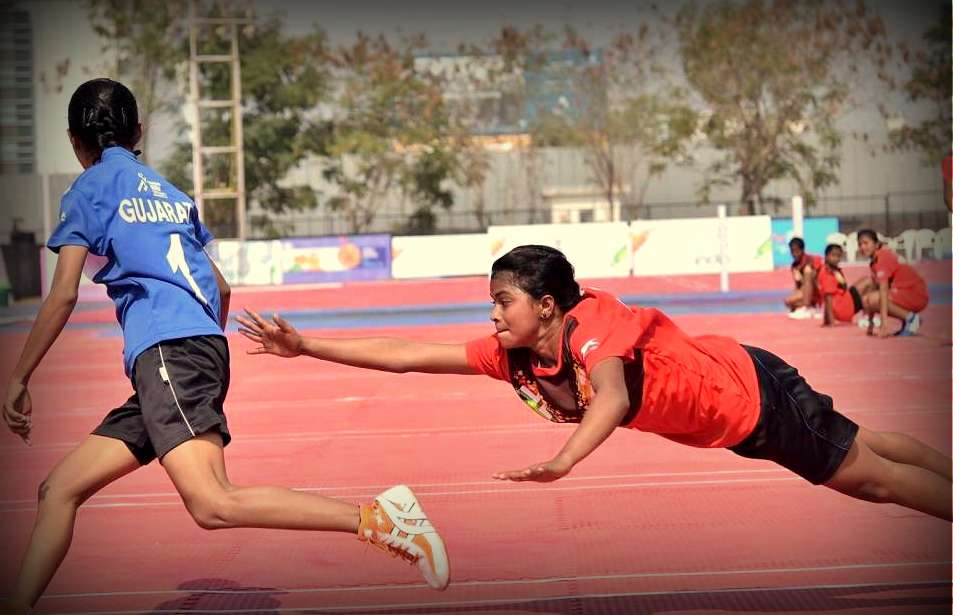
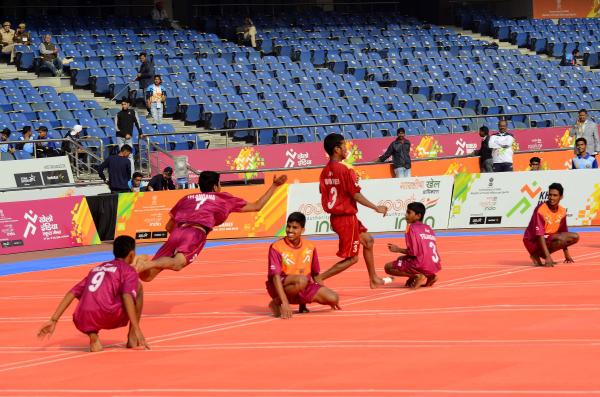
8.Hide and Seek/Chhupam Chhupai
The origin of this game is unknown. It is commonly played all over the world under different names. The players hide in a previously decided marked area. The ‘denner’ has to shut his eyes and announce numbers loudly while the other players get time to hide. Then, the denner has to find the hidden players. Any number of people can play this game.


9. Dog and the Bone
Dog and the Bone is a kids’ game contains two teams of 5 or more players each. An object like a handkerchief or stick is designated as the ‘bone’. A member of each team steps forward to encircle the bone placed in the middle of the playground. The aim is to retrieve the bone without being caught by the other player.


5 Indian games from our childhood that are vanishing from the lives of children today
Outdoor games from our childhood are needed to be revived in today's children.
Playing outdoor games is vanishing from the youngsters life as they rely more of virtual games more for refreshment. It is important to revive the importance of playing on ground in their life Games for children now-a-days are confined to the virtual world of video games. Also, because of the rapid infrastructural growth, there are only a few parks left for children to go out and play outdoor games. Playing outdoor games offers a healthy mental and physical status in a growing kid. They help to shape a better personality in kids, keep them in touch with nature and help them develop essential social skills.
Here is a list of five forgotten childhood outdoor games of India:
1.Gilli danda
- Gilli dandaa sport similar to cricket and baseball is one of the most popular outdoor games played in India.
- Gilli danda is a very popular Indian game, quite similar to baseball and cricket.
- This game is played with small piece of wood reduced and shaped at the edges known as 'gilli' and a long piece of wood known as 'danda'
- The 'gilli' is used as a ball and 'danda' is used as a bat to hit the 'gilli'
- The game is played by two teams of any number of players


2. Kho kho
- Kho kho is a traditional sport in India played between two teams.
- Kho kho is a popular sport in India. It is played between two teams with 12 members, out whom only nine play
- It is played in a rectangular field of 36 by 18 meters in length and width
- Eight members sit on the mid lane, facing alternate directions and the ninth member is an active chaser
- This game lasts not more than 37 minutes


- Hide-n-seek is known as chuppan chuppai in India.
- Hide-n-seek known as "chuppam chappai" in India are played by the kids
- In this game, the players hide themselves and one of the players finds the other members
- The chosen players close their eyes and count till 10, 50 or 100 and then try to catch the hidden players
- Kabaddi is a popular sport played between two teams.
- Kabaddi is a famous Indian game played between two teams of seven players
- One player of each team alternatively run into the opposite teams court and try to tag as many people as possible while chanting "kabaddi-kabaddi"
- If the player tags the players of opposite team and touches the midline without losing breath, his team wins points and the tagged players are out of the game
- If the players of the opposite team catch the player and succeed in holding him in their court till he loses his breath, the raider gets out and the defending team wins points
- This game is very popular in South African countries, Iran and Pakistan
- Langdi a game originated from Maharashtra, India.
- Langdi is a very famous sport in the Maharastra. It is played between two teams with 12 players on each side
- The match lasts for about 36 minutes. It is played in four innings of nine minutes each
- The team that wins the toss defends and the other team chases
- A chaser tries to tag the members of defending team while hopping on one foot
- The team that tags the most number of defending players wins
 Badminton
Badminton Chess
Chess Table Tennis
Table Tennis Cricket
Cricket Football
Football Basket Ball
Basket Ball Volley ball
Volley ball Billiards
Billiards
3.Hide-n-seek


4.Kabaddi


5.Langdi

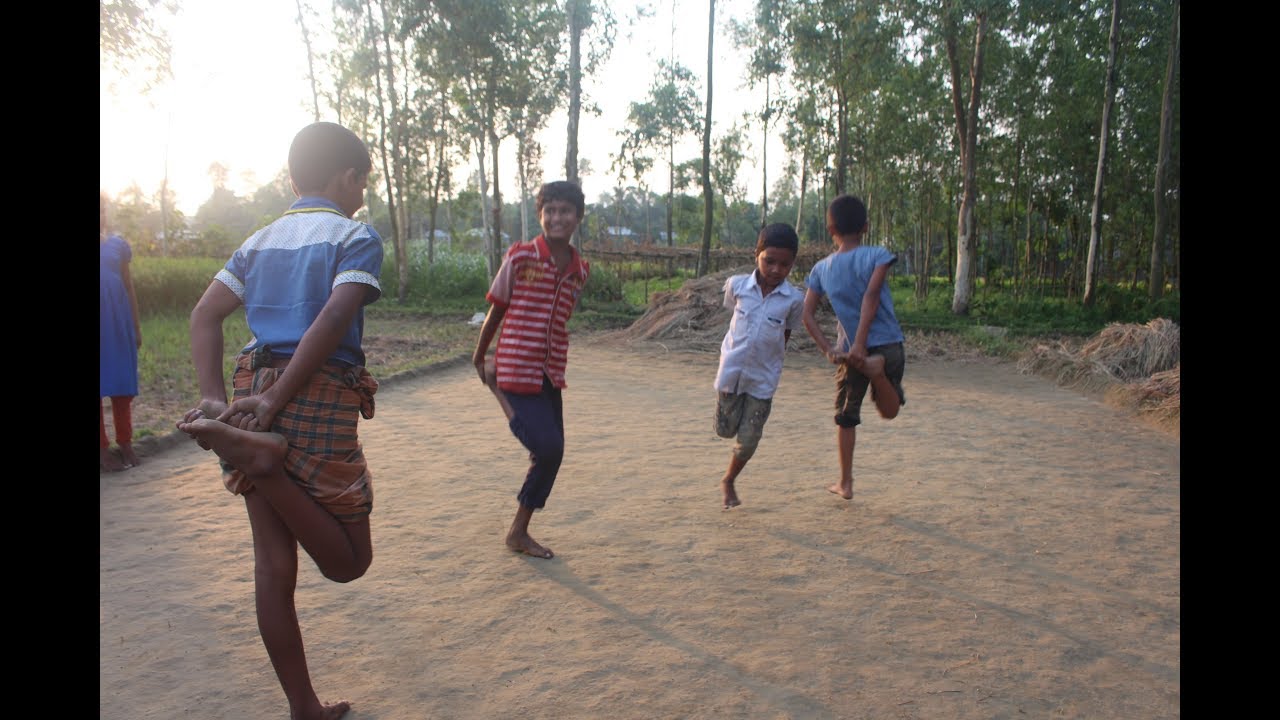
The Roorkee College has organized state level sports in association with Uttarakhand Technical University in Campus owing to its superior sports infrastructure.



